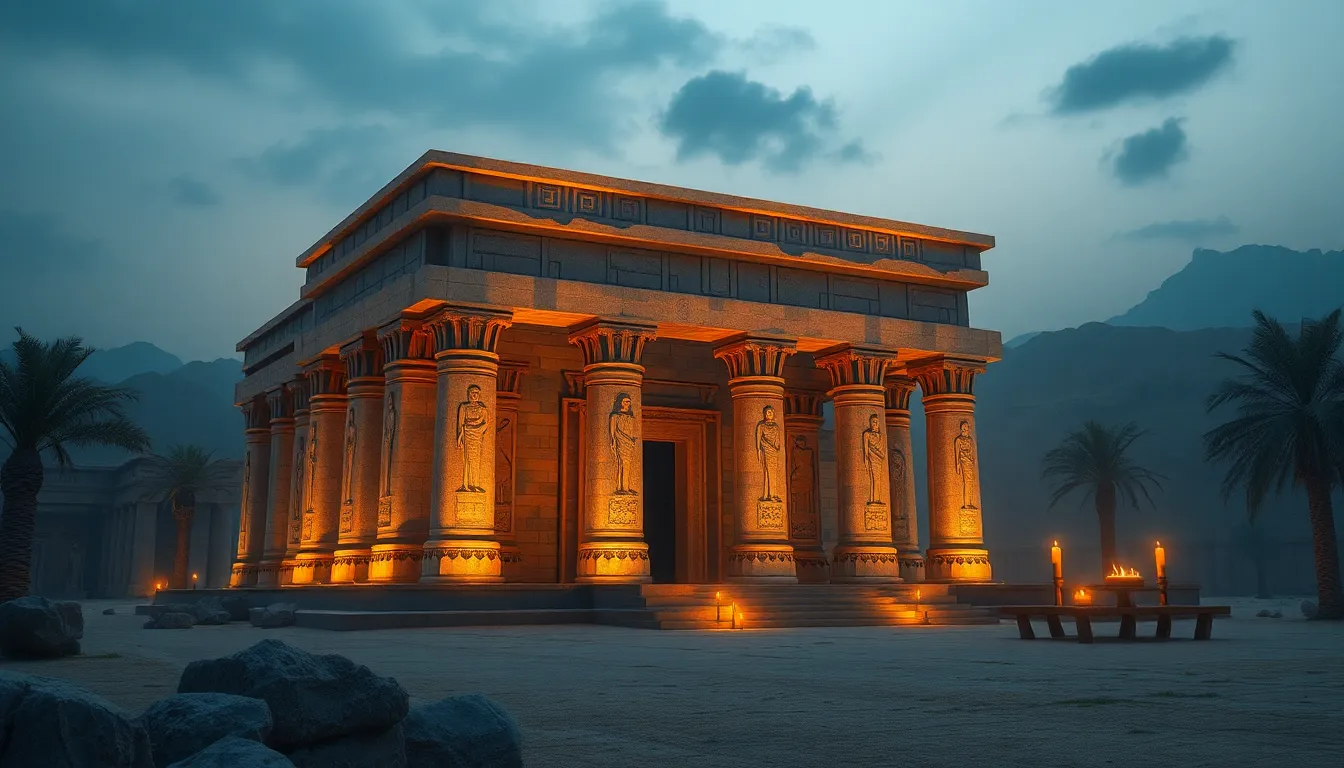The Sacred Festivals of Ancient Egyptian Temples
I. Introduction
Ancient Egyptian religion played a pivotal role in the daily lives and societal structure of ancient Egypt. It was a complex system of beliefs centered around numerous deities, each representing various aspects of life, nature, and the cosmos. Temples were not merely places of worship; they were the heart of religious, economic, and social life. This article aims to explore the sacred festivals associated with these temples, shedding light on their significance and the rituals that accompanied them.
II. The Role of Temples in Ancient Egyptian Culture
Temples in ancient Egypt served multiple functions beyond being sites of worship. They were:
- Religious Centers: Temples housed the gods and were the focal point for rituals and ceremonies.
- Economic Hubs: Temples managed large estates, facilitated trade, and accumulated wealth, which in turn supported the community.
- Social Institutions: They provided jobs, education, and a sense of community among the people.
The relationship between the gods and the pharaohs was also crucial; pharaohs were considered intermediaries between the divine and human realms, and their role in temple rituals reinforced their authority.
Architecturally, temples were designed with precise alignments and structures that enhanced their spiritual significance, including massive pylons, sanctuaries, and sacred lakes where purification rituals were performed.
III. Major Sacred Festivals and Their Significance
Several key festivals were celebrated in ancient Egypt, each holding distinct significance:
- Opet Festival: This festival celebrated the fertility of the Nile and the divine connection between the pharaoh and the gods. It involved a grand procession from Karnak to Luxor, where the statue of Amun was carried in a boat.
- Wepet-Renpet (New Year Festival): Marking the beginning of the Nile’s annual flooding, this festival symbolized renewal and rebirth, highlighting the agricultural cycle essential to Egyptian society.
- Khoiak Festival: Associated with Osiris, this festival celebrated death and resurrection, reflecting the ancient Egyptians’ beliefs in the afterlife and the cyclical nature of life.
These festivals can be thematically grouped into categories, such as agricultural celebrations, royal affirmations, and cosmic events, each reinforcing the interconnectedness of nature and divine will.
IV. Rituals and Ceremonies Associated with Festivals
During sacred festivals, various rituals were performed to honor the gods and ensure their favor. Common practices included:
- Processions: Grand parades featuring priests, priestesses, and the worshipers transported sacred objects and images of the gods through the streets.
- Offerings: Temples were adorned with flowers, food, and incense as offerings to appease the deities.
- Ritual Sacrifices: Animals, particularly bulls and birds, were sacrificed to symbolize devotion and gratitude to the gods.
Priests and priestesses played a central role in these celebrations, conducting rituals and maintaining the sacred spaces. Their expertise in the sacred texts and rites made them crucial to the success of the festivals.
V. The Influence of Festivals on Art and Architecture
The sacred festivals had a profound influence on ancient Egyptian art and architecture:
- Artistic Representations: Temples featured intricate reliefs and inscriptions depicting festival scenes, capturing the vibrancy and significance of the events.
- Architectural Features: Structures such as obelisks and processional ways were designed to accommodate large gatherings and facilitate rituals during festivals.
- Impact on Art Development: The themes and narratives of festivals inspired artists, leading to the evolution of distinct artistic styles that celebrated the divine and the mythical.
VI. The Societal Impact of Sacred Festivals
Sacred festivals served as a crucial means of unifying communities and reinforcing societal structures:
- Community Unification: Festivals brought people together, fostering a sense of identity and collective belonging.
- Economic Implications: Festivals stimulated trade and economic activity, requiring significant labor and resources, thus benefiting local economies.
- Social Hierarchies: The participation of the pharaohs and elite reinforced the social order, with festivals often highlighting the divine right of the rulers.
VII. Decline of Sacred Festivals and Their Legacy
Over time, several factors contributed to the decline of sacred festivals:
- Foreign Invasions: Conquests by foreign powers disrupted traditional practices and diminished the influence of temples.
- Religious Shifts: The rise of new religions, particularly Christianity and Islam, led to the abandonment of many ancient practices.
Despite these changes, the legacy of ancient festivals persists in modern Egyptian culture, where some traditions have been adapted or integrated into contemporary religious practices.
VIII. Conclusion
The sacred festivals of ancient Egyptian temples were not only vital religious observances but also essential to the social and economic fabric of ancient Egyptian society. They reflected the beliefs, values, and cultural identity of the people, leaving an enduring legacy that continues to influence modern practices. Preserving these ancient traditions is crucial for understanding the rich cultural heritage of Egypt and its historical significance.




